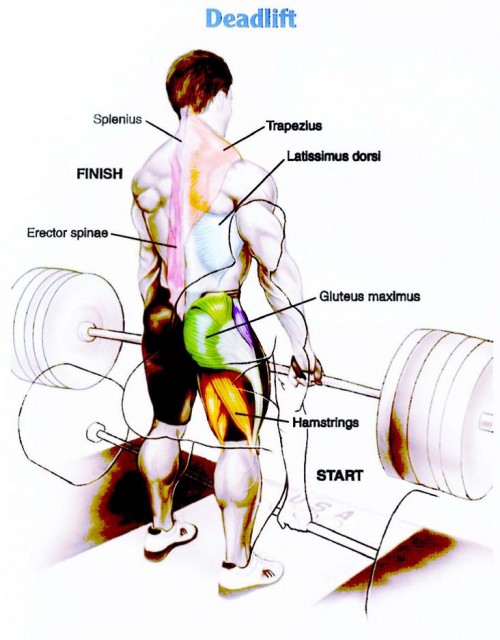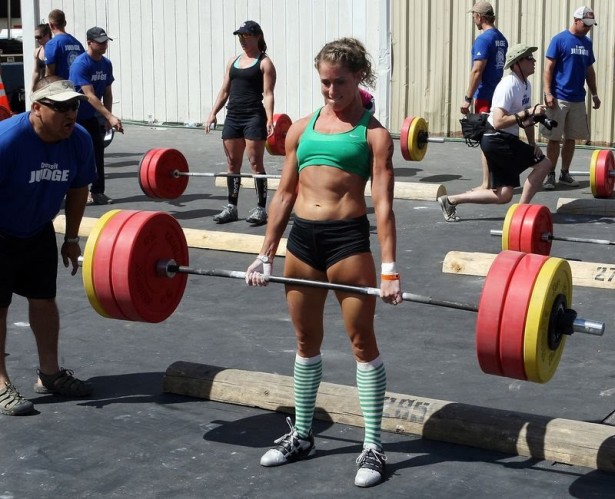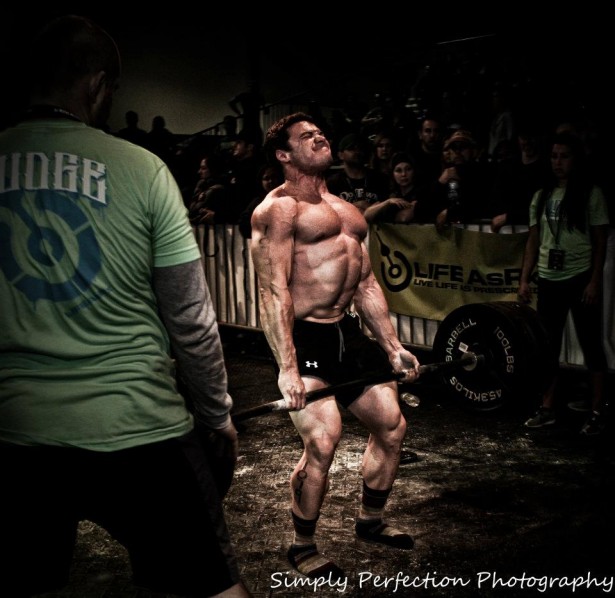The deadlift is the often-overlooked weight lifting exercise that is actually one of the best ways to burn fat and build muscle. It is a strength builder that body builders and powerlifters use to gain lean muscle mass and improve their strength.
The Benefits of Deadlifting
One of the reasons that the deadlift works so well is because it is a compound move that involves many body parts, including the hamstrings, quads, glutes, abs, traps, lower back, triceps, biceps, lats, calves and grip. Working all of these muscles with a sizable amount of weight on the bar is an effective way to build your strength.
Deadlifting requires physical and mental strength. Convincing yourself you can make the lift and beat your personal record takes a lot of mental power. The benefits of the deadlift are worth the effort though. Aside from discipline and self-confidence, deadlifting improves stability, posture, flexibility, and your cardio level.
Why People are Scared to Deadlift
The main reason people are scared to deadlift is the risk of injury. It’s not that deadlifting is a dangerous exercise, it’s just that you need to use proper form every time. It’s especially important to perfect your form and have a spotter before you start deadlifting 300, 400, 500 pounds or more.
Another reason people are scared of deadlifting is because no one has ever trained them how to do it properly. Cardio and weight machines at the gym are pretty self-explanatory. Even bench pressing and squats are more widely used exercises among gym-goers than the deadlift. You can really mess up your back or tear a bicep if you don’t use proper technique. A lifting belt is also a good idea because it protects the back during heavy lifts. The best option is to hire a qualified trainer to get you started and monitor your progress in the beginning. If you can’t afford to to that, you can also videotape your lifts to see what your form looks like and how you might improve your lifts.
Lastly, women in particular tend to fear deadlifting because it will make them bulk up and look manly. The truth is, deadlifting is a great exercise for women and it can help them burn fat and build lean muscle mass, just like men. The difference is that men and women can train the same, but they can’t eat the same. Women who perform heavy weight training exercises need to follow a high protein, low-carb diet to avoid bulking up. Combined with this diet protocol, women can see phenomenal results as their body changes. The ratio of fat-to-muscle changes and creates a leaner, stronger and healthier look.
Deadlifting Basics
There are several types of deadlifts. The first is conventional or Romanian deadlifting. This style works the quads, hamstrings and glutes the most. It also involves hip extensions.
• Start by stacking the barbell in front of you on the floor with the appropriate amount of weight. Beginners may need to use just the bar, without additional weight plates, until they get used to the exercise and perfect their form.
• Approach the bar until your legs are almost close enough to touch the bar, spread about six inches apart.
• As you bend down to grab the bar, keep in mind that you need to stick your butt out and pull your shoulders back. No slouching.
• Keep your weight on your heels and avoid rolling up to the ball of your feet or on your toes.
• Find a comfortable grip. Its perfectly fine to use an overhand grip when lifting lighter weights or if that is your preference. To get a better grip on the bar and prevent the bar from slipping out of your hands, however, a reverse grip is recommended. This simply means using one overhand and one underhand grip at the same time.
• Take in a deep breathe and puff out your stomach before you lift the bar.
• Aim for a steady upwards pull, arms and elbows locked in place.
• Stand all the way up, locking the bar in place with your hips fully extended, shoulders back and chest out.
• Stay in control of the weight as you let the bar down and set the weights back on the floor.
• Stretch out your hamstrings and hip flexors to prevents soreness after your workout.
• Approach the bar until your legs are almost close enough to touch the bar, spread about six inches apart.
• As you bend down to grab the bar, keep in mind that you need to stick your butt out and pull your shoulders back. No slouching.
• Keep your weight on your heels and avoid rolling up to the ball of your feet or on your toes.
• Find a comfortable grip. Its perfectly fine to use an overhand grip when lifting lighter weights or if that is your preference. To get a better grip on the bar and prevent the bar from slipping out of your hands, however, a reverse grip is recommended. This simply means using one overhand and one underhand grip at the same time.
• Take in a deep breathe and puff out your stomach before you lift the bar.
• Aim for a steady upwards pull, arms and elbows locked in place.
• Stand all the way up, locking the bar in place with your hips fully extended, shoulders back and chest out.
• Stay in control of the weight as you let the bar down and set the weights back on the floor.
• Stretch out your hamstrings and hip flexors to prevents soreness after your workout.
The sumo deadlift is a little different in that the legs are spread wider apart, the toes are pointed out and the hips are rotated out. This version works your hips and quads more than the conventional method.
Deadlifting Training Schedule
You may be thinking that the deadlift is an easy move and the training is easy as well. But it takes a lot of work to increase your deadlift max and there are a few ways you can do this. While going all out and reaching your personal best lift is exciting, it’s not a good idea to max out often. Instead, switch things up with your training.
• Do light weights for high repetitions of 12-20 to increase your deadlift. It also doubles as a cardio exercise, elevating your heart rate in intervals.
• Lift a moderate amount of weights for 3-5 repetitions.
• Do mini deadlifts. The difference between these and conventional deadlifts is that you use a much lighter weight and don’t set the weight down between lifts, the weight hangs just below the knees at the low end, then you stand straight up as if you were doing a regular deadlift. Two sets of 20 is usually enough to feel it in your hamstrings. If you feel it in your lower back, it’s time to rest.
• Use seated machines to build your hamstrings and quads.
• Lift a moderate amount of weights for 3-5 repetitions.
• Do mini deadlifts. The difference between these and conventional deadlifts is that you use a much lighter weight and don’t set the weight down between lifts, the weight hangs just below the knees at the low end, then you stand straight up as if you were doing a regular deadlift. Two sets of 20 is usually enough to feel it in your hamstrings. If you feel it in your lower back, it’s time to rest.
• Use seated machines to build your hamstrings and quads.
Be careful not to overdo it. Never train the same body part two days in a row. Allow time for your muscles to rest and repair themselves. You can also spend time doing isolated exercises that strengthen each of the muscles used to deadlift. Over time, this type of training will increase your maximum deadlift.
Tracy Rose
*Tracy has set the female record for deadlift in the state of Michigan
Tracy’s blog: http://
*Tracy has set the female record for deadlift in the state of Michigan
Tracy’s blog: http://



No comments:
Post a Comment